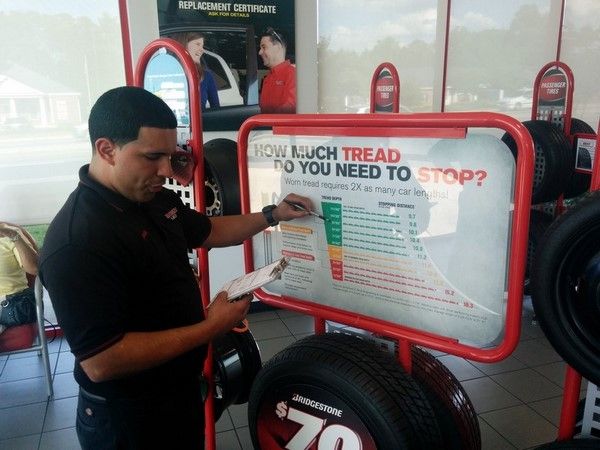The only thing that separates your car from the road are its tires. Tires have a lot of work to do, upholding as much as two to three tons of vehicle while keeping you safe. If your tires are in good condition, you’ll be all right. If not, you could put yourself and others in danger. Here are the top tire maintenance tips for your consideration.
1. Follow the manufacturer’s recommendations. Tire care begins by following the recommendations offered by the car manufacturer. This means getting acquainted with the book that is sitting in your car’s glove box, namely the owner’s manual. Turn to the section about tire care and you will learn how often your tires should be rotated. Likely, it will mention something like 5,000, 6,000 or 7,000 miles.
2. Keep your tires properly inflated. Over inflation and under inflation can cause trouble for your tires. You need to check the tires with a gauge when they are cold. Then, fill it to the car manufacturer’s limit. That information is also found in your owner’s manual and may be on a placard affixed to the door jamb on the driver’s side.
3. New tires go to the back axle. Regardless of whether your vehicle is front-wheel drive, rear-wheel drive, four-wheel drive or all-wheel drive, new tires should be placed on the rear of the vehicle. And it is always good to replace tires in pairs — either buy two or four.
4. Check tread levels regularly. It isn’t safe to drive a car with less than 2/32 of an inch of tread left. That means checking your tires regularly, usually every three months, to ensure that they’re good to go. The Lincoln penny test remains a popular choice — stick Abe’s head in the tread and if any part of it is showing, then replace that tire.
5. Replace like tires with like tires. You don’t have to use the same, exact tire brands and models across all four tires. However, the tires should be roughly the same with radials matched with radials and off-road with off-road. If you mismatch the tires, then they will wear unevenly. Furthermore, they will handle better if all four are alike.
6 Winter tires all around. It used to be that people would place their snow tires on the rear axle and leave it at that. But that can affect handling as well as wear on the rest of your tires. It may cost you more, but placing winter tires on all four wheels makes sense. You’ll enjoy better handling and even wear all winter long.
7. The older, the more likely your tires should be replaced. Few manufacturers address tire aging issues directly, perhaps to avoid any misunderstandings that can lead to a lawsuit. Tires that reach six years old and have plenty of tread left may not be in great shape. Rubber and other materials will degrade over time, putting vehicles at risk. If tires are 10 years old, replace them even if they look good.
New Tires
When shopping for new tires, you may find it cheaper per tire to shop for four then you would for two. That’s because tire manufacturers routinely incentivize your purchase to get more tires. Indeed, it is common for manufacturers to offer up to $70 off the price of four tires and in some cases will give you one tire free when buying four.
As you shop for tires, only buy from a reputable retailer advises Mavis Tire. Learn the full scope of what purchase includes. Typically, you will get free balancing and rotation, but not always. Also, front end alignments are extra and should be sought any time your car gets out of alignment.
In summation, never neglect your tires. They represent an investment that will protect the rest of your car as well as you and your occupants.

